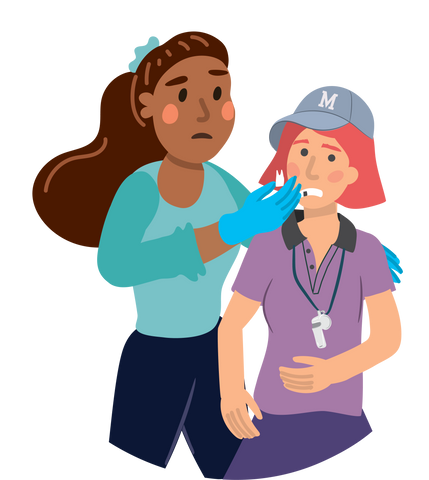Dislodged Tooth

A tooth may be dislodged on the sports field, playground or even in a swimming pool - a fall or direct blow to the jaw or mouth are the most common causes.
Applying immediate and effective first aid may save a secondary ('adult') tooth, especially if followed as soon as possible by professional dental care.
Bleeding or pain from the tooth socket, mouth, lip or tongue are common symptoms of a dislodged tooth.
1. Clear airway and place patient in recovery position if bleeding is heavy and being ingested.
2. Control bleeding by applying firm pressure to the tooth socket with a sterile dressing, gauze swabs or a clean tissue.
3. Have patient suck dislodged tooth clean and, without touching the root, try to reinsert it in the socket. There is no need to reinsert a primary (baby) tooth.
4. Keep tooth in place by wrapping it, and teeth either side, in foil. Patient should bite down firmly to keep the root in contact with the socket.
5. If unable to reinsert, have patient carry the tooth between their lower front teeth and lip bathed in saliva, OR place tooth in a clean container of milk or saline, but not water.
6. Obtain dental care as soon as possible, even if the tooth is only chipped. Call Triple Zero (000) for an ambulance if the patient is bleeding heavily or in severe shock.
